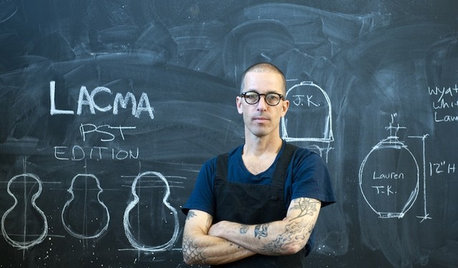Fungicide timing questions
chadinlg Zone 9b Los Gatos CA
14 years ago
Featured Answer
Sort by:Oldest
Comments (18)
kellascat
14 years agoglenn_russell
14 years agoRelated Professionals
Quincy Landscape Architects & Landscape Designers · Alexandria Landscape Contractors · Clermont Landscape Contractors · Burlington Landscape Contractors · Chelmsford Landscape Contractors · Conroe Landscape Contractors · Davidson Landscape Contractors · La Verne Landscape Contractors · Lantana Landscape Contractors · Marlborough Landscape Contractors · Morrisville Landscape Contractors · Old Saybrook Landscape Contractors · Roseville Landscape Contractors · Westchester Landscape Contractors · Hawaiian Gardens Landscape Contractorsolpea
14 years agokellascat
14 years agoolpea
14 years agochadinlg Zone 9b Los Gatos CA
14 years agoolpea
14 years agoolpea
14 years agoglenn_russell
14 years agoalan miller
7 years agoyovan mcgregor
6 years agoalan miller
6 years agoyovan mcgregor
6 years agorphcfb14
6 years agoyovan mcgregor
6 years agolast modified: 6 years agorphcfb14
6 years agoyovan mcgregor
6 years ago
Related Stories

WORKING WITH PROS9 Questions to Ask a Home Remodeler Before You Meet
Save time and effort by ruling out deal breakers with your contractor before an in-person session
Full Story
GARDENING GUIDESNo-Regret Plants: 5 Questions Smart Shoppers Ask
Quit wasting money and time at the garden center. This checklist will ensure that the plants you're eyeing will stick around in your yard
Full Story
MOST POPULAR8 Questions to Ask Yourself Before Meeting With Your Designer
Thinking in advance about how you use your space will get your first design consultation off to its best start
Full Story
REMODELING GUIDES13 Essential Questions to Ask Yourself Before Tackling a Renovation
No one knows you better than yourself, so to get the remodel you truly want, consider these questions first
Full Story
LIGHTING5 Questions to Ask for the Best Room Lighting
Get your overhead, task and accent lighting right for decorative beauty, less eyestrain and a focus exactly where you want
Full Story
5 Questions for Design Stars
Add Your Ideas for Outdoor Storage, Cheering Up a Fireplace and More
Full Story
TASTEMAKERS5 Questions for Heath's Adam Silverman
A studio director brings out-of-the-ordinary dinnerware and home accessories to Heath Ceramics' showrooms. See where he goes for inspiration
Full Story
Easy Green: 6 Must-Answer Questions Before You Buy
Thinking about buying ecofriendly furniture? For a truly environmentally conscious home, ask yourself these questions first
Full Story
KITCHEN DESIGN9 Questions to Ask When Planning a Kitchen Pantry
Avoid blunders and get the storage space and layout you need by asking these questions before you begin
Full Story
SELLING YOUR HOUSE15 Questions to Ask When Interviewing a Real Estate Agent
Here’s what you should find out before selecting an agent to sell your home
Full StoryMore Discussions








rphcfb14